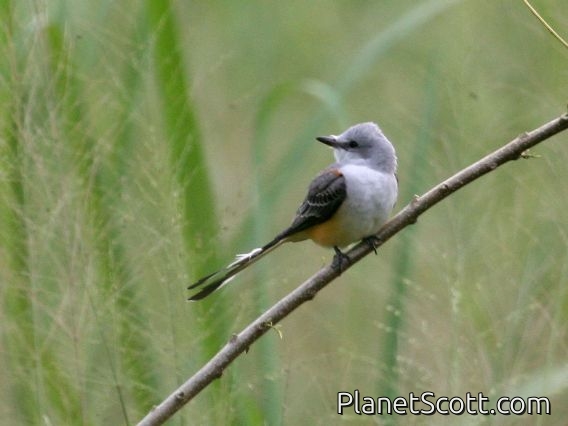Scissor-tailed Flycatcher (Tyrannus forficatus)

Scissor-tailed Flycatcher (Tyrannus forficatus)
×


Scissor-tailed Flycatcher (Tyrannus forficatus)
About Scissor-tailed Flycatcher (Tyrannus forficatus)
- Kingdom: Animals
- Phylum: Chordates
- Class: Birds
- Order: Perching Birds
- Family: Tyrant Flycatchers
The scissor-tailed flycatcher, known as swallow-tailed flycatcher or scissorstail, is a long-tailed insectivorous bird of the genus Tyrannus, whose members are collectively referred to as kingbirds. Its scientific name used to be Muscivora forficata until it was changed to Tyrannus forficatus. It is found in North and Central America, and is Oklahoma's State Bird.
Source: Wikipedia
Lifelists
Visits
-
2007-10-10
La Mancha, Mexico -
2007-10-19
Las Barrancas, Mexico -
2009-02-15
Granada, Nicaragua -
2013-04-15
Balcones Canyonlands NWR--Refuge HQ (Travis Co.), United States of America -
2013-04-16
Aransas NWR (CTC 037) (Aransas Co.), United States of America -
2013-04-19
Bolivar Peninsula, United States of America -
2013-04-20
Attwater Prairie Chicken National Wildlife Refuge, United States of America




